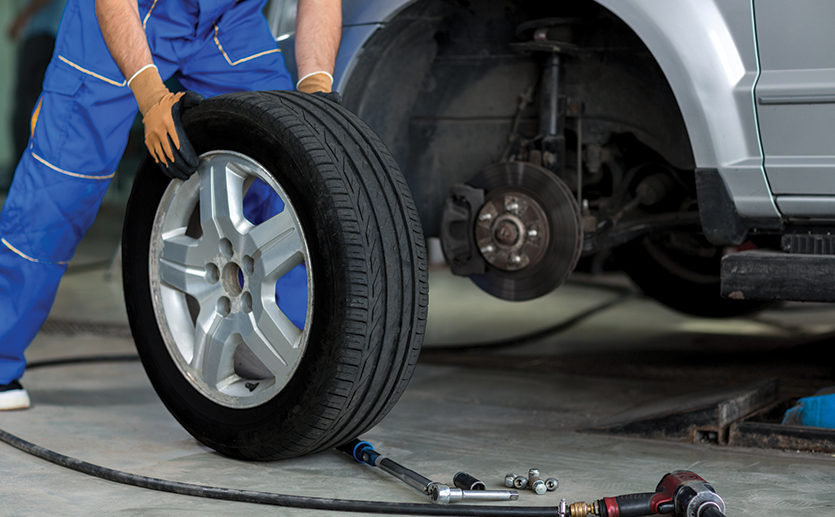Morris Tires: Your Partner for Professional GMC Tires Service
Wiki Article
Tire Solution: The Effect of Climate Condition
When it comes to ensuring ideal performance and safety when driving, comprehending the impact of climate condition on tire service is vital. From scorching warmth to icy roads, each weather element can dramatically affect tire functionality and overall driving experience. By delving into the impacts of differing weather on tires, vehicle drivers can acquire valuable understandings that may boost their car's performance and longevity. In this conversation, we will explore the intricate partnership in between climate condition and tire service, dropping light on the value of weather-specific tire upkeep practices and factors to consider.Warm and Tire Efficiency
When subjected to high temperatures, tires experience modifications in performance that can substantially influence lorry security and handling. The warm created from prolonged driving or heat problems creates the tire rubber to soften, resulting in minimized step life and boosted wear. As the rubber comes to be softer, the tire's hold on the roadway diminishes, influencing stopping ranges and general grip. In severe cases, too much warm can also trigger tire blowouts, posing a serious safety and security threat to the automobile and its passengers.
Cold Weather Effects
Cold weather problems can have a substantial impact on tire efficiency and safety. In cold weather, tires may additionally lose air stress more swiftly, which can affect managing and gas efficiency.To reduce the results of winter on tires, it is critical to on a regular basis examine tire stress and inflate them to the maker's recommended levels. Using winter or all-season tires developed for cool weather problems can likewise improve traction and hold on icy or snowy roadways. Proper tire upkeep, including routine assessments for wear and damages, comes to be much more critical throughout colder months to make sure ideal performance and safety.
Rainy Conditions Effect
Tires with damaged treads are a lot more susceptible to hydroplaning, where a layer of water constructs up in between the roadway and the tire surface, leading to loss of grip. To fight this, vehicle drivers must on a regular basis check their tires for appropriate walk deepness and take into consideration spending in tires specifically developed for damp conditions.Additionally, rainy climate can also lower exposure, making it challenging for drivers to see the road ahead clearly (GMC Tire Service). In such conditions, it is vital to readjust driving rates as necessary morris tires and keep a risk-free following range to permit for unexpected quits. Effectively inflated tires can likewise help in maintaining control on wet roadways by providing much better handling and grasp
Snow and Tire Safety And Security
When driving in snowy conditions, having the right tires can make a substantial difference in safety and efficiency. Winter months tires are created with unique rubber compounds and tread patterns to give better traction on snow and ice compared to all-season tires.
Moreover, vehicle drivers need to think about setting up tire chains in severe snowy conditions. Tire chains offer additional traction by gripping the snow and ice, improving stability and control. Nonetheless, it is essential to comply with producer instructions when utilizing and setting up tire chains to stop damage to the tires and car. By choosing the best tires, preserving appropriate inflation, and taking into consideration extra traction help like tire chains, drivers can enhance their safety when browsing snow-covered roadways.
Weather-Related Tire Upkeep
Weather-related tire upkeep includes an array of techniques intended at making sure ideal tire function and durability in different climate circumstances. One crucial element of weather-related tire upkeep is tire stress guideline. Checking tire walk on a regular basis and replacing tires when tread wear gets to a specific depth is essential for preserving grip and security in negative weather.
Verdict
To conclude, climate condition have a considerable impact on tire efficiency and safety. From heat influencing tire pressure and use to cold climate lowering traction, it is vital to consider the weather condition when maintaining and making use of tires. Rainy problems can decrease grasp and result in hydroplaning, while snow can increase the danger of mishaps if tires are not appropriately equipped. Weather-related tire upkeep is crucial in making certain ideal performance and safety and security when driving.In this discussion, we will certainly explore the detailed connection in between weather conditions and tire service, dropping light on the relevance of weather-specific tire upkeep methods and factors to consider.

Report this wiki page